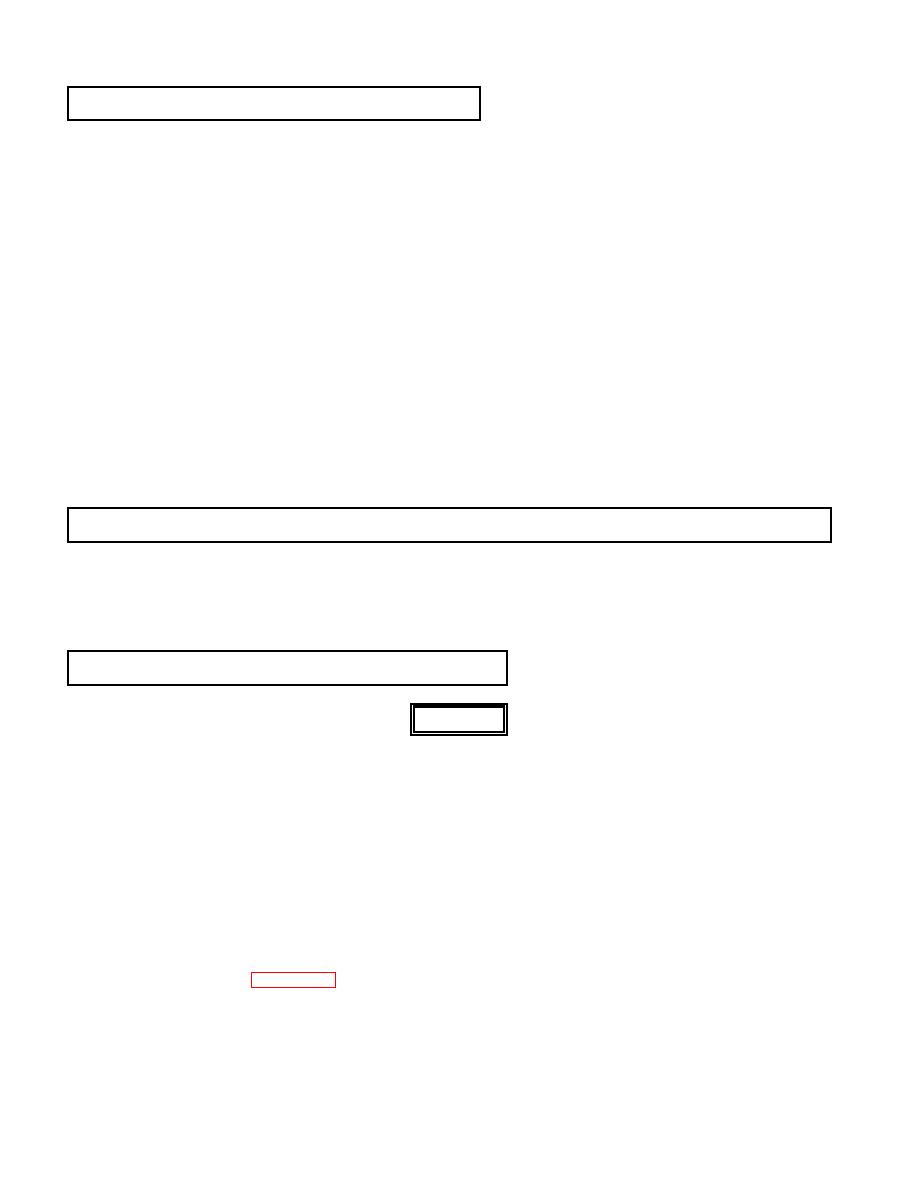 |
|||
|
|
|||
|
Page Title:
Section III. PREVENTIVE MAINTENANCE CHECKS AND SERVICES (PMCS) |
|
||
| ||||||||||
|
|
 TM 9-2320-366-20-1
2-6. SERVICE BEFORE OPERATION (CONT)
(10) Tire Inspection.
(a) Check tire pressure (TM 9-2320-366-20-1).
(b) Inspect tires for serious cuts, bubbles, cracks, bruises, dry-rot, foreign objects, or exposure of internal cords.
Remove any foreign objects lodged between treads (TM 9-2320-366-20-1).
(c) Check all wheel mounting nuts for proper torque (para 12-4).
(11) Fuel System Inspection (TM 9-2320-366-20-1).
(a) Check fuel level and replenish if necessary.
(b) Inspect fuel tubes, hoses, connections, and filters for evidence of leakage.
(12) Arctic Kit. If vehicle is equipped with an arctic kit, and is going to operate in non-arctic climates, remove arctic
alternator belts and replace with standard belts (para 7-4).
Section III. PREVENTIVE MAINTENANCE CHECKS AND SERVICES (PMCS)
This section contains Unit Maintenance Preventive Maintenance Checks and Services (PMCS) requirements for the
vehicle. The PMCS table contains checks and services necessary to ensure the vehicle is ready for operation. Using
the PMCS table, perform maintenance at the specified intervals. Perform PMCS in TM 9-2320-366-10-1 before doing
the Unit Maintenance PMCS.
WARNING
Dry Cleaning Solvent P-D-680 is TOXIC and flammable. Wear protective goggles and gloves;
use only in well-ventilated area; avoid contact with skin, eyes, and clothes, and do not
breathe vapors. Keep away from open flame. Never smoke when using solvent; the
flashpoint for Type I Dry Cleaning Solvent is 100F (38C) and for Type II is 130F (50C).
Failure to comply may result in serious injury or death to personnel.
If personnel become dizzy while using Dry Cleaning Solvent, immediately get fresh air and
medical help. If solvent contacts skin or clothes, flush with cold water. If solvent contacts
eyes, immediately flush eyes with water and get immediate medical attention. Failure to
comply may result in injury to personnel.
a. Cleanliness. Dirt, grease, oil, and debris only get in the way and may cover up a serious problem. Use Dry
Cleaning Solvent (Item 65, Appendix D) on metal surfaces and soapy water on rubber.
b. Bolts, Nuts, and Screws. Check bolts, nuts, and screws for obvious looseness, missing, bent, or broken
condition and replace as necessary. If they cannot be checked with a tool, look for chipped paint, bare metal, or rust
around bolt heads.
|
|
Privacy Statement - Press Release - Copyright Information. - Contact Us |